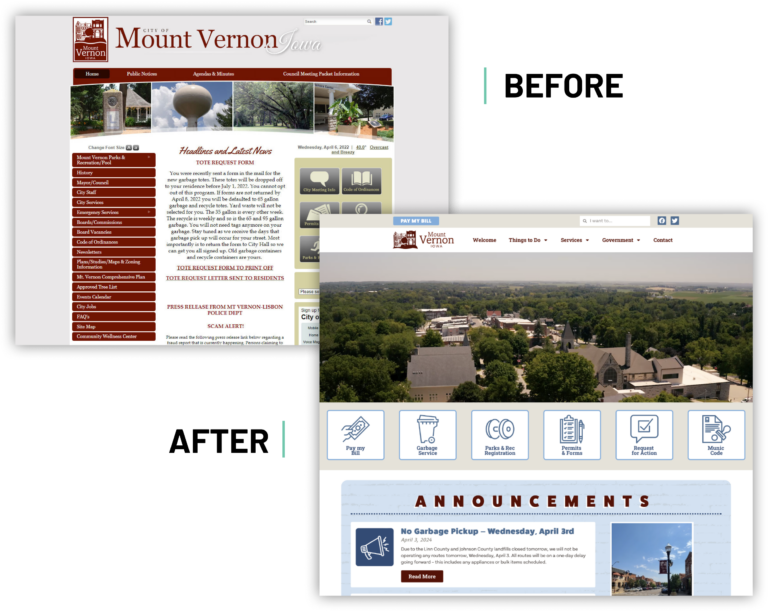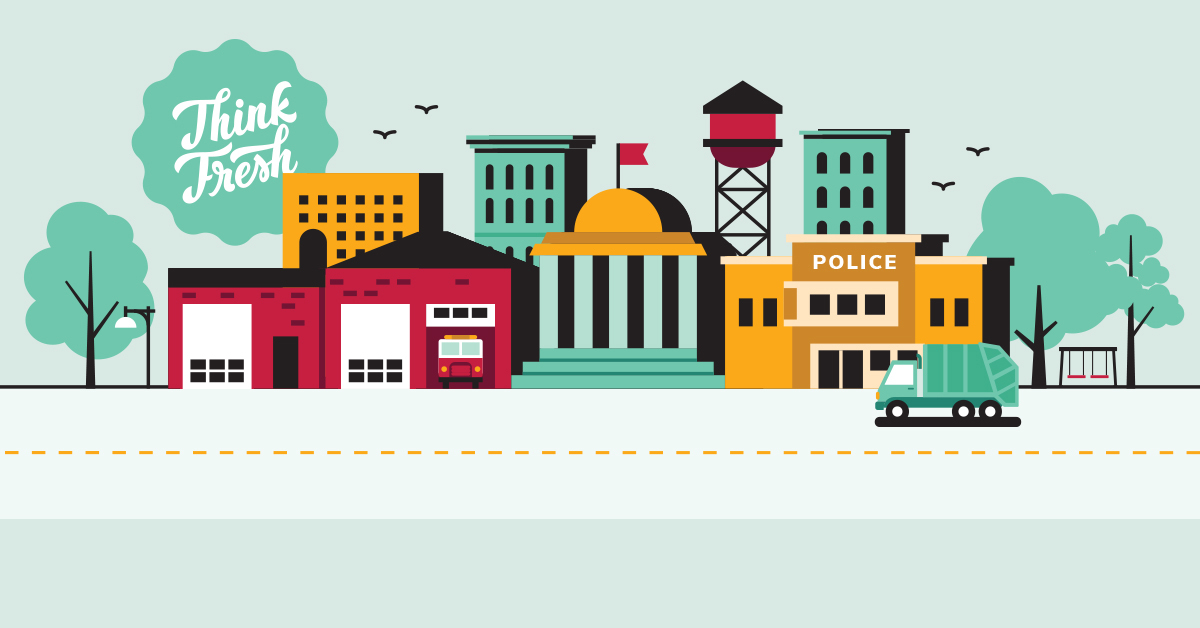Cities are responsible for communicatinga lot of crucial information, including things like public safety updates, policy changes, and local events. With various news mediums, digital platforms, and social media constantly competing for attention, it can be a struggle to effectively engage residents despite an expectation of clear and timely updates.
There is a solution.
By adopting key marketing principles, cities can address challenges, streamline messaging, reach audiences where and when it matters, and build a recognizable identity that fosters a stronger community and promotes growth.
The importance of clear, consistent communication
Clarified communication is the cornerstone of transparency for cities. When residents feel informed, it builds trust and encourages engagement. From updating the community on roadwork to sharing emergency alerts and explaining how new policy changes will impact residents, communication clarity helps people feel connected to the decision-making process. This contributes to meaningful participation in community and civic life—benefiting everyone.
Conflicting information is a sign of broken communication. When different city departments put out contradictory updates, it takes a toll on the public’s confidence in local decision-makers. Not to mention, it makes it harder for residents to identify credible sources of information.
Clear messaging leads to increased participation and fewer misunderstandings, meaning fewer complaints and more comprehension from residents.
What are the challenges?
Typically, challenges stem from old or disjointed systems, like outdated websites or online platforms. The legacy systems that cities often use can be difficult to navigate, slow to update, or are simply not optimized for mobile use, which can create frustration as residents try to access important information.
Another frequent issue is fragmented communication across departments. When different city offices operate in silos, messages can get lost in translation, creating inconsistent information that exacerbates confusion and frustration.
Digital access and fluency—or lack of it—is an ongoing concern cities need to address. Not all citizens have equal access, exposure, or expertise when it comes to the internet, mobile devices, and other digital tools. Cities must consider all audiences when making updates that improve communications. If not, there is a risk that portions of their community—especially vulnerable populations—will remain uninformed.
The messaging itself also needs to be accessible. Difficult language filled with advanced or niche jargon can be a barrier for many residents. If the average citizen is unable to understand the message, then communication falls flat.
And finally, branding. A city’s brand becomes its identity. Without a cohesive, recognizable brand, residents may struggle to decipher official messages from false claims or scams, further diluting the effectiveness of all communication. This can be especially problematic during times of crisis when clarity and trust are most critical—and residents are most vulnerable.
So, how can marketing agencies help cities overcome these challenges? We’re so glad you asked.
The role of marketing agencies
Agencies can partner with your city to serve as a public information officer, public relations specialist, web developer, and messaging strategist to ensure city communications are optimized and effective. Through that partnership, communities gain access to the creativity, resources, and capabilities of an entire team.
For outdated systems, agencies can help improve or implement modern, functional, and resident-friendly tools like new websites, enhanced plug-ins, and integrated CRM databases.
A city’s website serves as the central hub for resources, so it needs to be user-friendly, mobile-optimized, and intuitive. Residents should be able to easily find permits, forms, and information on community events or city services. An optimized website not only makes it easier for residents to access necessary information but also reflects the city’s commitment to modernizing its services and improving accessibility.
Crafting concise, consistent, and compelling messaging is a primary function of agencies and a driving force of most campaigns. The practice of aligning and unifying messaging for different platforms and audiences makes content clear and accessible for residents. Whether that means communicating a change, sharing local success stories, or outlining a vision for the future, a solid messaging strategy allows cities to move beyond simply providing information. Instead, decision makers can craft a story, leveraging and fostering relationships with the people who call their community home.
Navigating social media and the digital space is another key role of marketing agencies. These digital platforms are powerful tools for communities as they seek to update residents on processes, promote local events, or even gather feedback on upcoming decisions.
Agency teams know how to analyze communication metrics such as website traffic, social media engagement, and email open rates that provide valuable insight into what resonates with residents. This allows for adjustments in messaging, tone, or platform focus to better meet the needs of the community and ensure more effective communication.
Agencies also know a thing or two about design, visual identity, and branding. Strong visual branding helps build trust by providing a cohesive look and feel across all platforms. This creates visual familiarity, a sense of pride, and confidence in the city and its communications.
A digital transformation for Mount Vernon, Iowa

We didn’t stop there. The new website project kicked off a digital transformation for the City of Mount Vernon, leading to innovative applications that have changed the way the city handles processes and requests for action.
Hear even more about these successes from Lori Boren, Mount Vernon’s Assistant City Administrator, on our Think Fresh podcast!
We wrote the book on community engagement
How can we help? Start the conversation!


